Peace Demonstrations
January 2001 to July 2021
Protest the War in Iraq, Los Angeles 2003-2005 | Occupy Phoenix 2011 | Women's March, Phoenix 2017 | March for Voting Rights, Phoenix 2021
Photos by Nori Muster
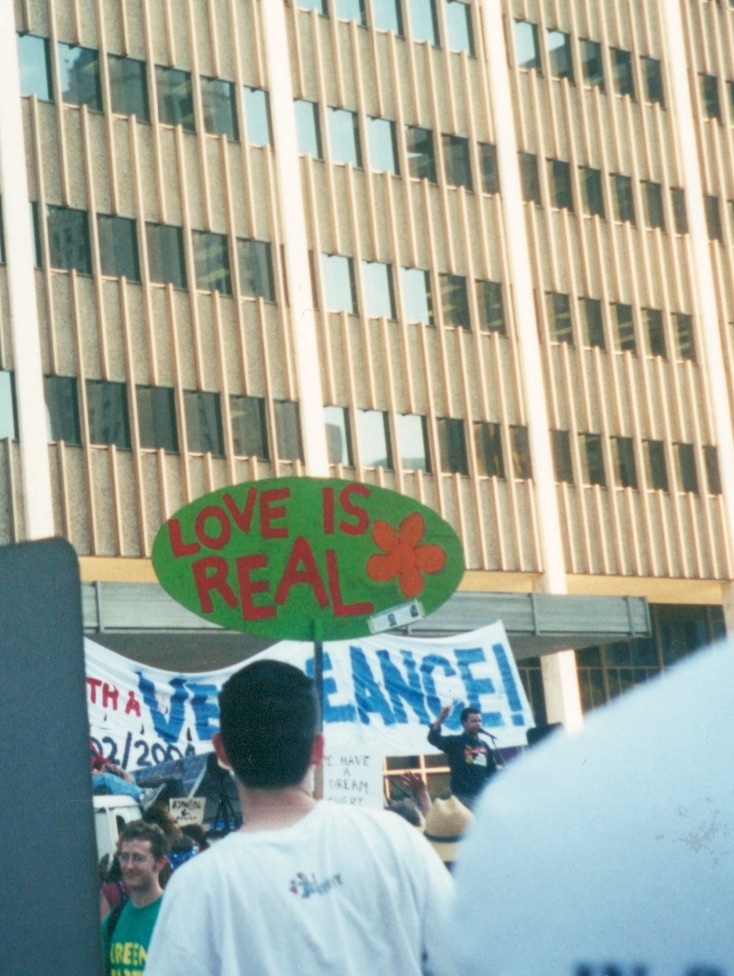
January 20, 2001 - George W. Bush Inauguration Day
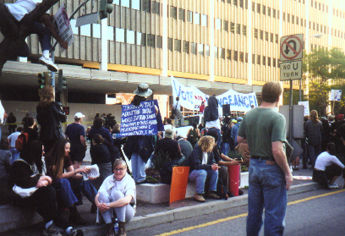
This is how we spent the day in downtown Los Angeles.
Protest Impending War in Iraq - January 11, 2003
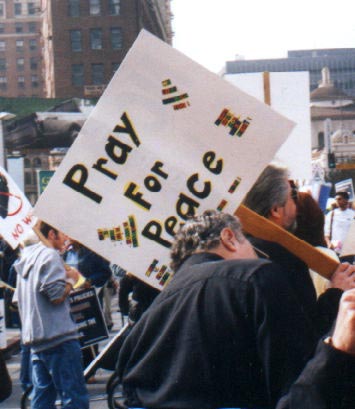
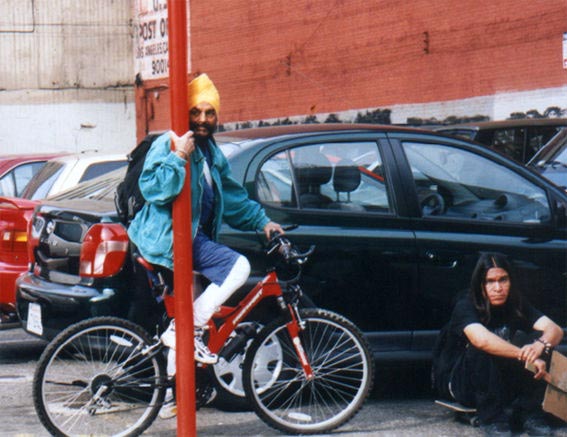
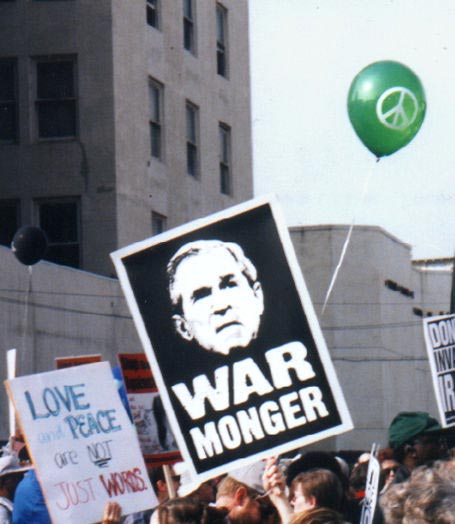
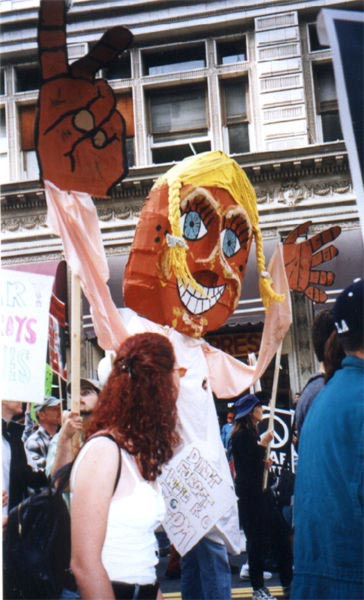
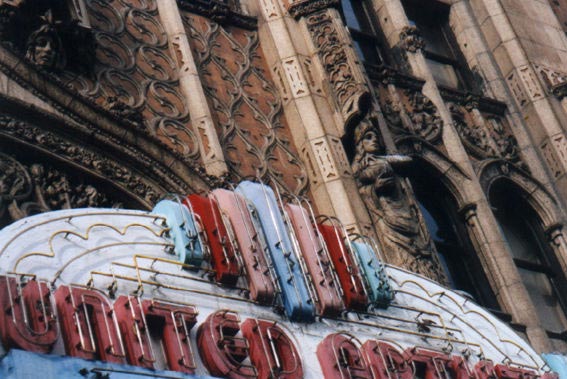
Peace March from Broadway and Olympic to the Federal Building on Los Angeles Street. (We demonstrated here again on March 15, but because of the rain I did not bring my camera. It rained four inches in one day.)
Peace Demonstration - February 15, 2003
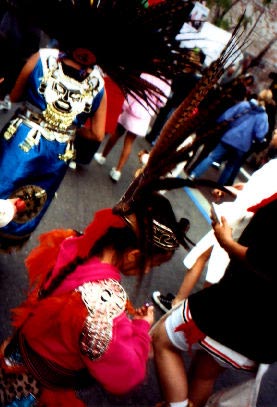
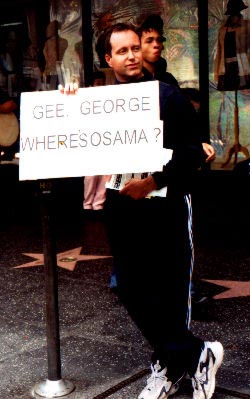
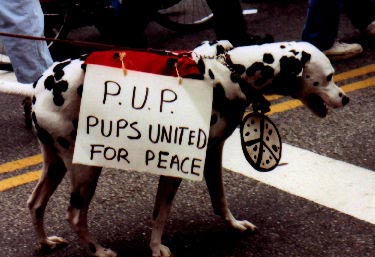
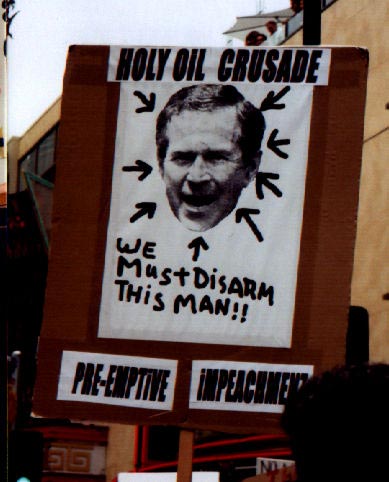
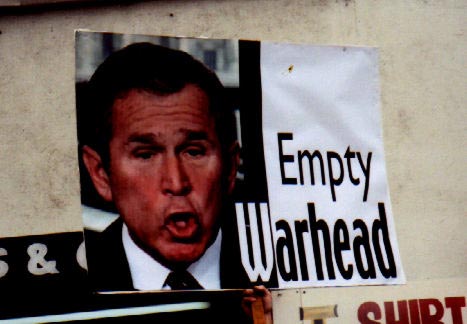
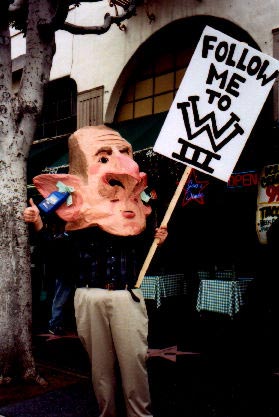
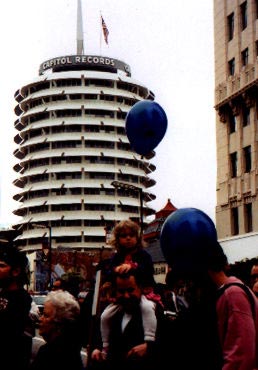
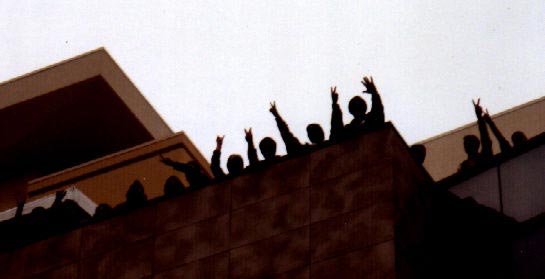
Peace March from Hollywood and Vine to Sunset and La Brea.
Protest in Hollywood After the War Started - March 22, 2003
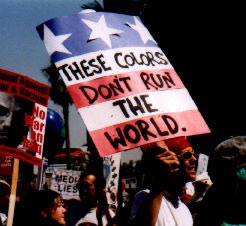
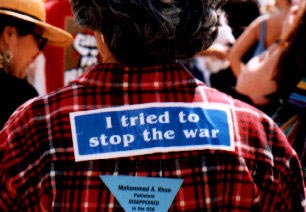
Hollywood Protest - September 29, 2003
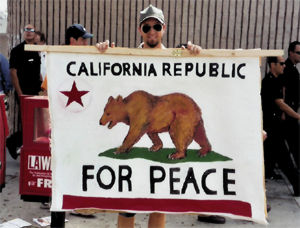
The last weekend of September was dedicated to peace marches around the world. Several thousand people gathered at Hollywood and Vine, then marched about a mile down Sunset Boulevard, then held a rally on Hollywood and Highland.
War's Second Anniversary - March 19, 2005
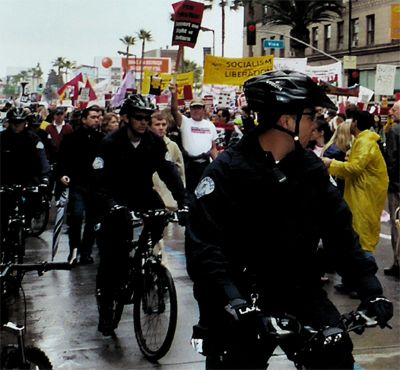
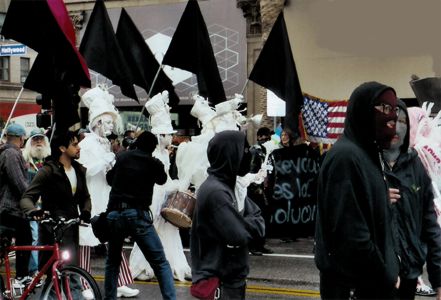
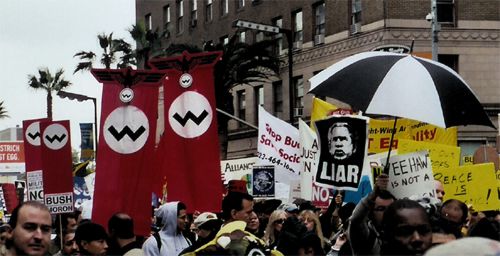
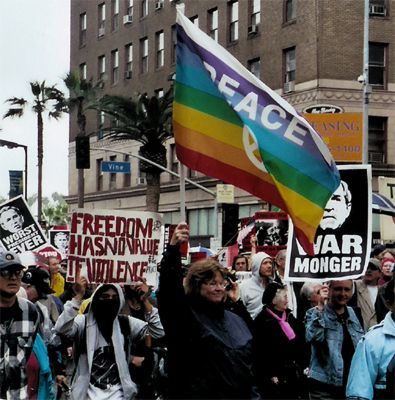
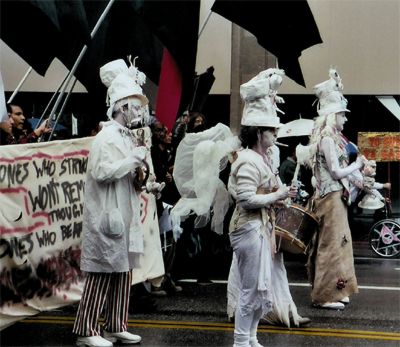
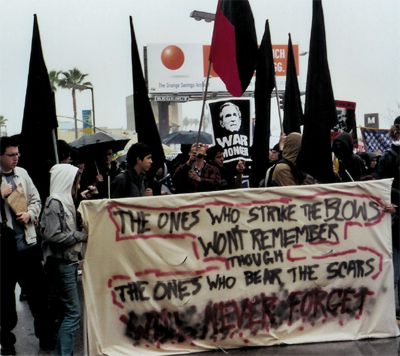
Hollywood & Vine, another rainy day protest. Mourners and police dominate the mood.
Commentary:
Go Out to Protest in the Rain
by Nori J. Muster
On March 15, 2003, we had a peace march in Downtown Los Angeles. In many ways it was like the other large demonstrations our city hosted in January and February, either in Downtown or Hollywood. The main difference on March 15 was that it rained. It not only rained, but the skies opened up and cried. It was a long, hard cry, dumping four inches on Downtown L.A. in one day.
The rain-soaked march took place at a time when everyone knew President Bush and his men were getting anxious to start the war. They didn't announce any specific plans, but just said they wanted to use "shock and awe" to frighten the Iraqi people into submission. Their ambition was to drop more bombs in the first forty-eight hours than the total number of bombs dropped during Desert Storm in 1991.
The January and February demonstrations were lighthearted, because we still thought we could prevent the war. The rain march was more like a funeral procession. I contributed my own tears to the torrents of rain drops that anointed us as we walked together. It was our last chance to stop something that most people thought was inevitable.
People might think that Southern Californians are afraid of weather. Even I was worried that there might be a poor turnout that day due to the rain, but I was wrong. It was by far the largest march Los Angeles has ever seen, including anything that happened during the Vietnam era. It was a day of reckoning, the Ides of March, that dangerous day for all politicians. We were out in the rain marching to try to prevent war.
Meanwhile, President Bush traveled to the Azores Islands, nine hundred miles off the coast of Portugal, to meet with the only major world leaders who supported his war: British Prime Minister Tony Blair and Spanish Prime Minister Jose Maria Aznar. Bush apparently got the support he wanted because he started dropping bombs within three days of the summit.
I joined a couple more demonstrations in Hollywood and Downtown after the war started, but had to endure criticism, even scorn. People questioned whether it was polite to protest once the war had started. They said we should accept the war and support the troops. After attending about six major demonstrations in the first half of 2003 and enduring criticism for it, I now realize what a grave act it is to protest against one's own country. It's not something to be taken lightly. It's a statement of dissent, of disapproval. It sets me against my country's leadership and singles me out as someone who has a problem with the way things are going.
Back in the Vietnam days, as a young teenager, I also attended anti-war demonstrations. I was firmly against that war and still feel the same way. In fact, now thirty years later, I'm even more opposed to the Vietnam War because I've learned more about it. Activism was strong in the 1960s and 1970s, but after living through both eras, it's clear to me that the peace movement of 2003 has far surpassed anything that took place before.
When historians look back on the peace movement of 2003 they will note that our demonstrations took place simultaneously in dozens of countries; millions of people spoke out to try to prevent the quagmire that is now Iraq. Further, I believe that the Bush Administration will go down in history as the most bloody and ruthless administration in American history.
Back in the 1960s some people put bumper stickers on their cars that said: "My Country Right or Wrong." The thinking was that people should show their patriotism by putting blinders on and supporting whatever the president wanted to do in Vietnam, or elsewhere. Fortunately, they got that one wrong. The full quote attributed to Carl Schurz is: "My country, right or wrong; if right, to be kept right; and if wrong, to be set right!" A contemporary of Schurz, Mark Twain, said the same thing in another way: "Loyalty to my country; always. Loyalty to my government; only when it deserves it."
The Iraq war has killed thousands of innocent civilians and no weapons of mass destruction have been found. Although historians may approve of our peace movement, we must to live now, in the present day. We must be certain that we want peace, and that we want to be the generation that speaks out for peace; despite the weather, despite the critics. We do not do protest lightly, but with the utmost gravity and conscience. If our country is wrong, we must set it right. Working together through our activism and participation in coming elections, we can succeed.
Here are some ways to get active: Write letters, sign online petitions, attend meetings, and take part in mass demonstrations. And pray.
Occupy Phoenix - October 15, 2011
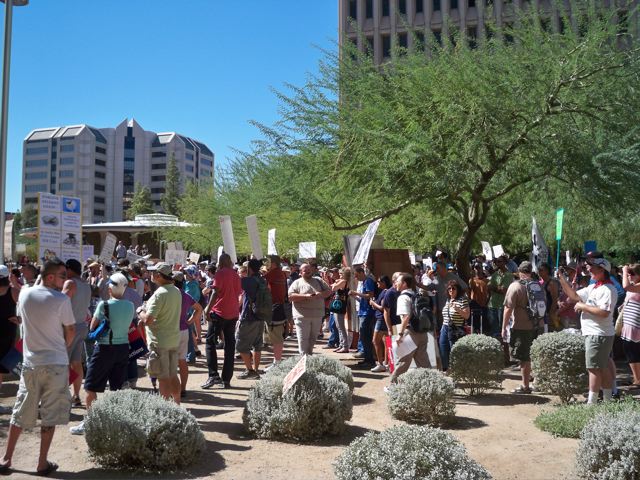
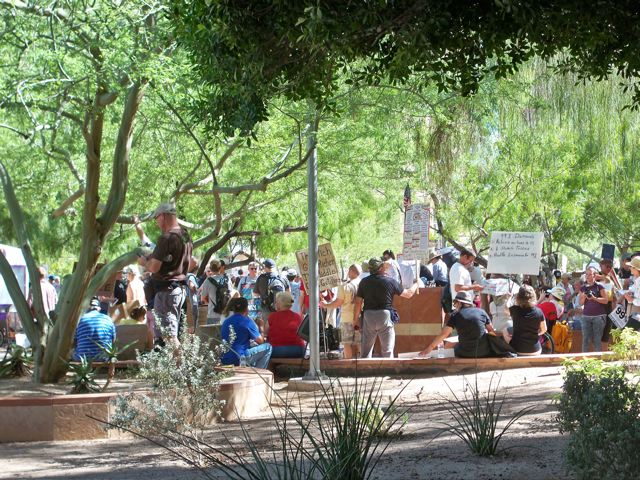
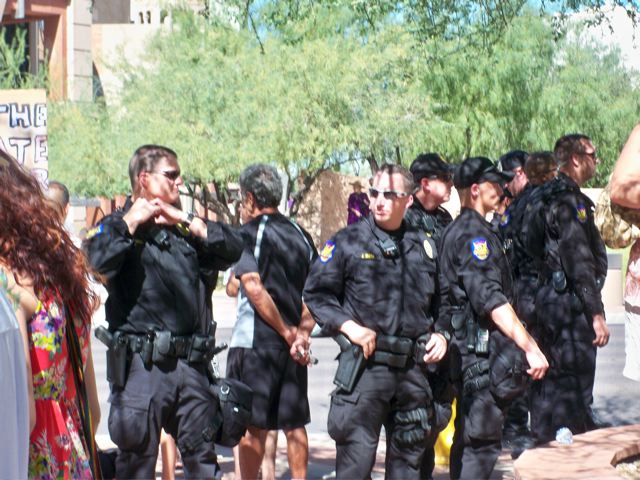
Women's March in Phoenix - January 21, 2017
To send a message to Trump, women and their allies gathered in peaceful protest around the world. In Phoenix we had twenty thousand people. Here's a list of all the cities that held events: docs.google.com. It was an estimated three to five million people nationwide. All the local TV news stations in Phoenix covered the event in their five o'clock news, and repeated the coverage in their news programs throughout the night.
"There comes a time when silence is a betrayal." - Martin Luther King
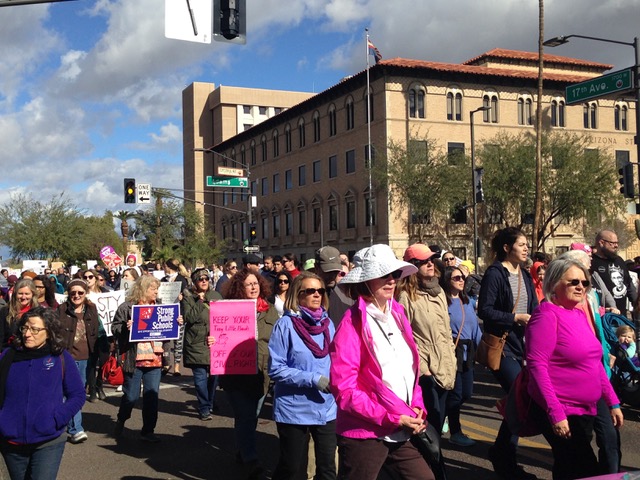
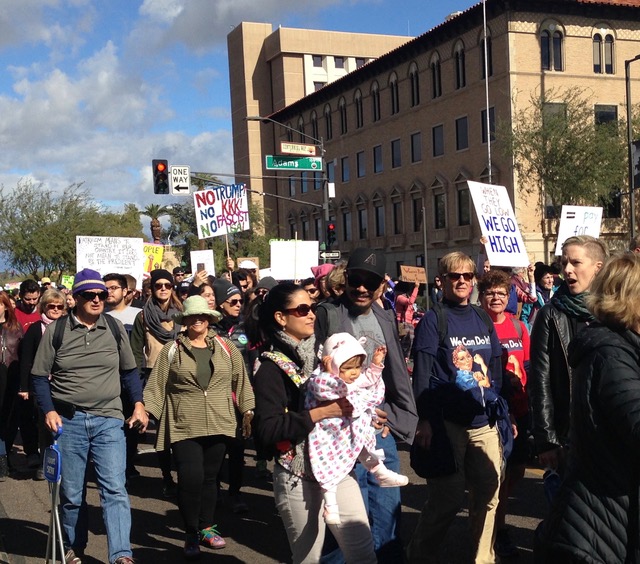
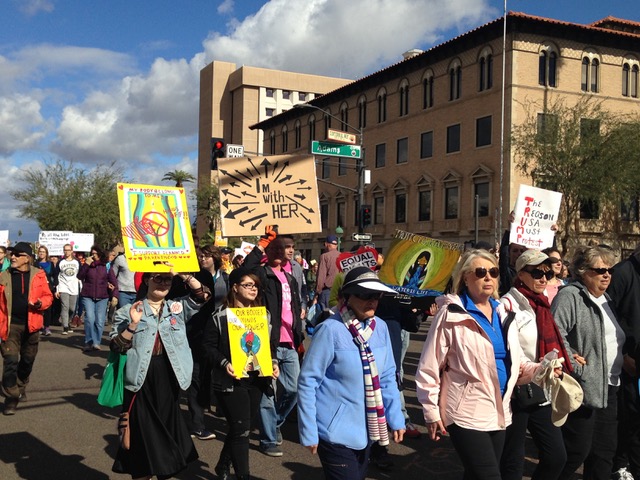
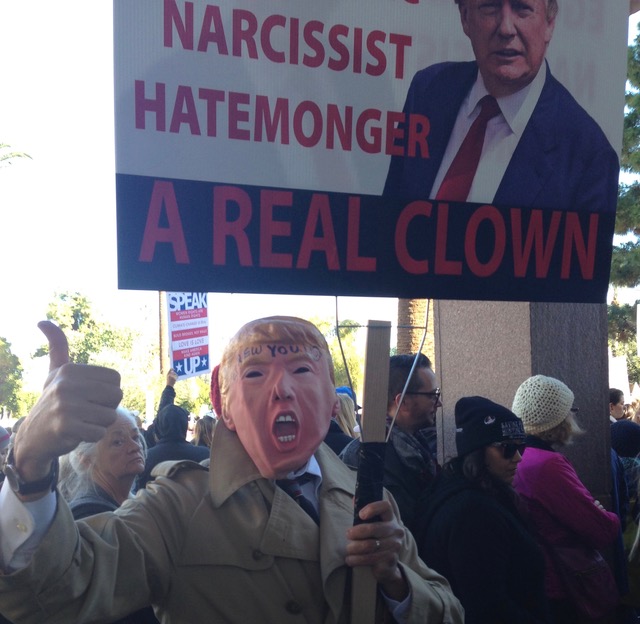
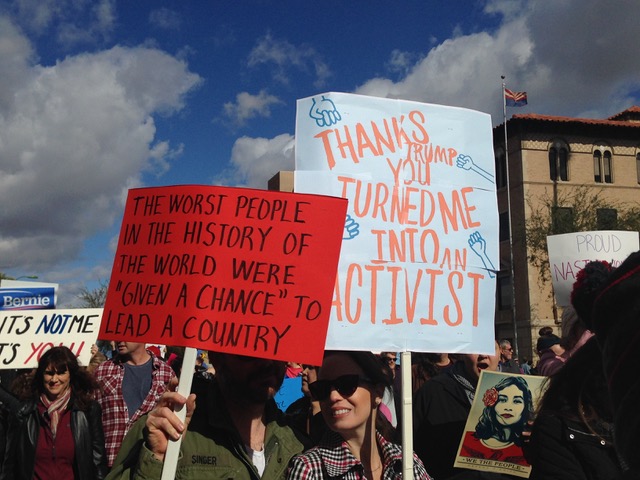
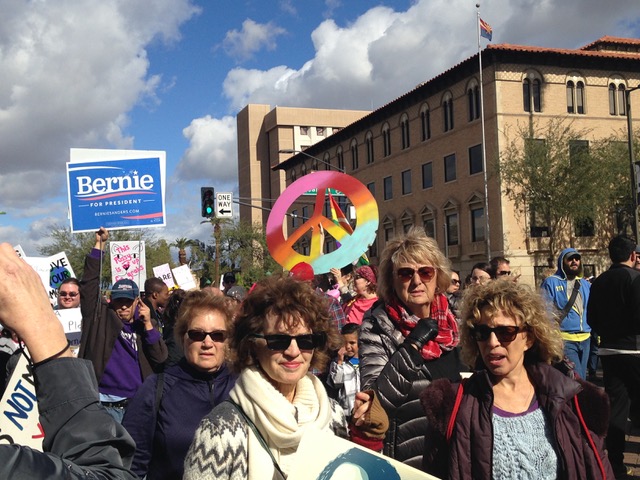
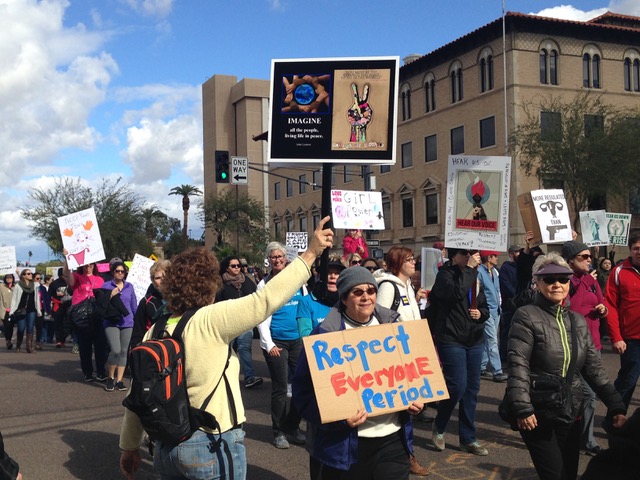
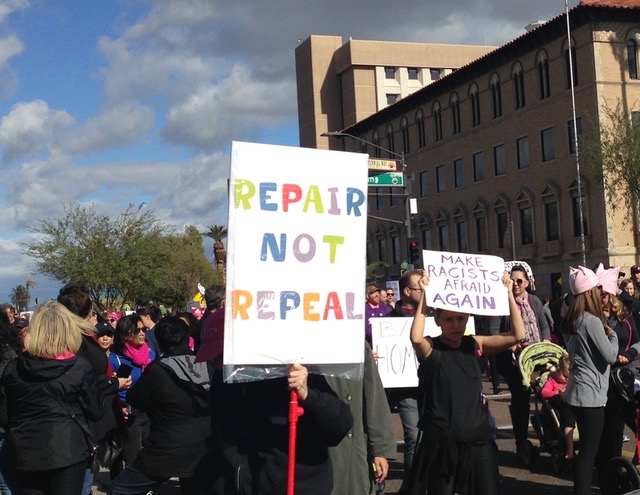
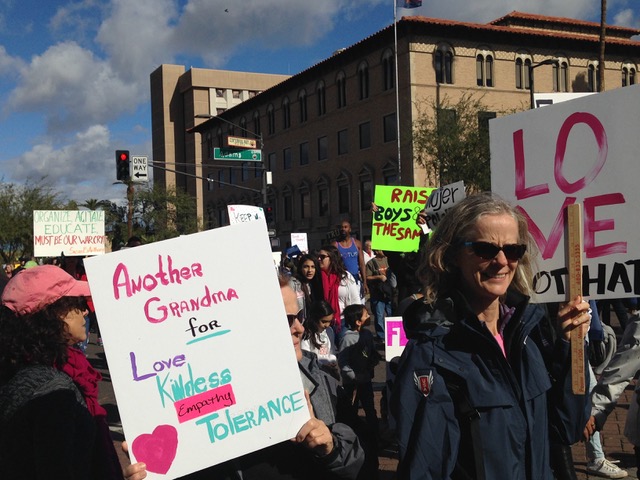
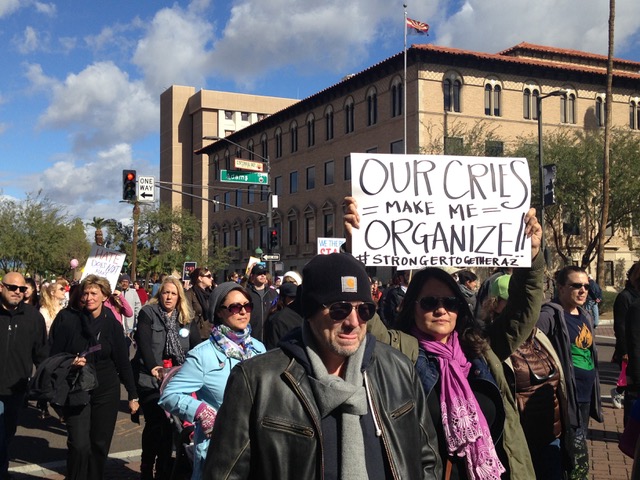
March for Voting Rights in Phoenix
July 26, 2021
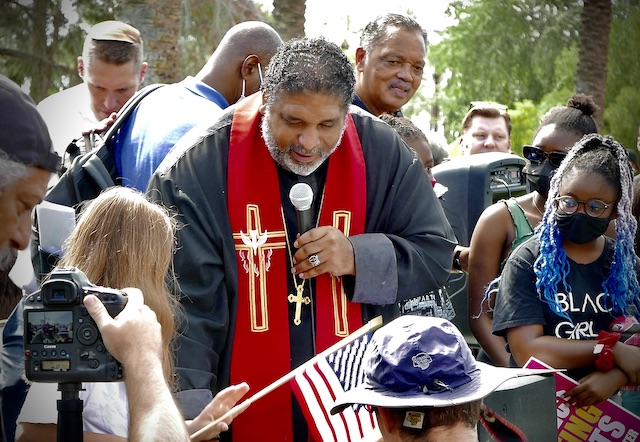
In the summer of 2021 we wanted voting rights legislation to pass, but the filibuster in the Senate was blocking it. Then political and social rights ministers William Barber II and Jesse Jackson visited to help us out in Phoenix. Our Senator, Kyrsten Sinema, wanted to keep the filibuster.
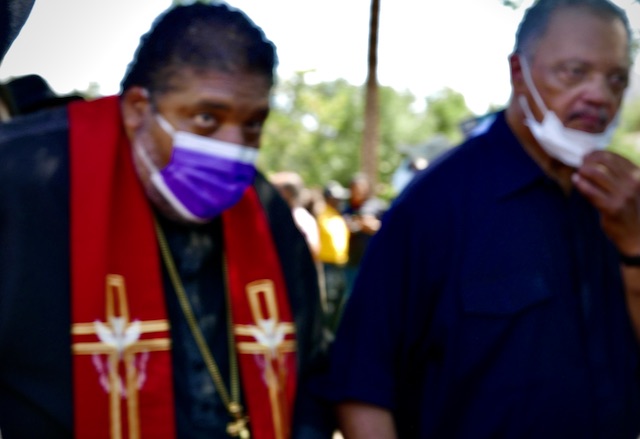
We congregated at Kachina Park, then marched two miles north and west to Senator Kyrsten Sinema's office.
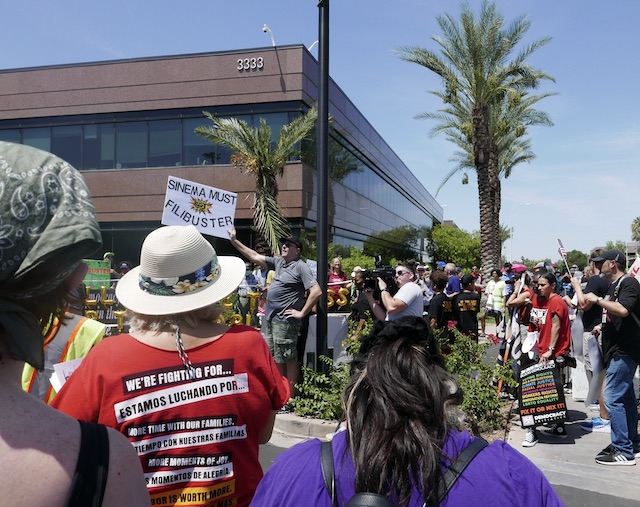
Everyone crowded into the parking lot. Senator Sinema wasn't there, but the organizers announced that anybody who wants to get arrested could come to the back of the parking lot. It was hard to resist running back there to be arrested with Rev. William Barber and Rev. Jesse Jackson. But also humiliating it had to be that way. The police treated our spiritual leaders bad, but released them without taking them to jail. Since that time, Phoenix has tended to be more blue, so we're making gradual progress here.
